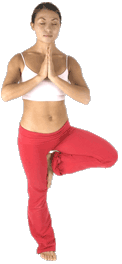At WiseGEEK, we're committed to delivering accurate, trustworthy information. Our expert-authored content is rigorously fact-checked and sourced from credible authorities. Discover how we uphold the highest standards in providing you with reliable knowledge.
What Is Mudra Yoga?
Mudra yoga is a type of yoga that is typically performed with the hands alone. The hands may be placed into many gestures, or mudras, regarded as sacred hand positions in yoga philosophy. Practitioners of mudra yoga generally believe that these hand positions are capable of exerting a powerful influence over the body's energetic field. Different yoga mudras are believed to have different effects on the mind and body, and a specific mudra may be practiced in order to achieve a specific effect. It's generally recommended that a mudra be practiced for 10 to 45 minutes each day for maximum benefit.
The positions practiced in mudra yoga generally require the use of both hands. Many of these yoga hand positions require that the hands be clasped together in some way, while others require that both hands be placed in the same position. Many practitioners perform a chant or mantra while sitting, standing, or lying down with their hands in the sacred mudra position. It is believed important that the hands and fingers remain at ease and comfortable as long as the chosen position is held.

There may be dozens or hundreds of various yoga hand positions, each with its own specific purpose. One popular mudra, the guyan mudra, may be familiar even to people who do not practice yoga or meditation. This mudra is typically performed by bringing the forefinger and thumb together to form a ring, while the other three fingers of the hand remain extended. The gesture is performed with both hands simultaneously. It is believed capable of relieving stress, depression and insomnia while promoting peace and clarity in the mind.
Similar mudra yoga positions can also be performed by joining the tip of the thumb with the tip of the middle, ring and little fingers respectively. The other fingers should generally remain extended, but relaxed. These mudras are said to promote patience, intuition, and effective communication, respectively.
Some sacred yoga gestures require the two hands to be clasped together in some way. The jupiter mudra, for instance, typically requires the two hands to be clasped together, with the thumbs crossed on top and the index fingers extended. This mudra is believed to enhance luck and help the practitioner overcome personal obstacles.
AS FEATURED ON:
AS FEATURED ON:










Discussion Comments
My yoga instructor teaches mudras in addition to asanas.
This week we learned gyan mudra (thumb and index finger touch), shuni mudra (thumb and middle finger touch), prithvi mudra (thumb and ring finger touch) and buddhi mudra (thumb and little finger touch)
Gyan mudra means knowledge, shuni mudra means patience, prithvi mudra means energy and buddhi mudra means communication. They're very simple to do and yet very beneficial. I'm practicing shuni mudra right now because I need more patience.
@serenesurface-- That's right, mudras are used in various forms of Indian classical dance such as bharatanatyam. These gestures are also called hastas and each of them certainly carry a meaning. These gestures are used to portray emotions. For example, alapadma hasta, or the lotus gesture and the atakavardhana hasta are some of the most commonly used gestures in bharatanatyam.
But mudras are not only used in yoga and dance in India. Indians also use mudras while speaking, to convey an emotion. For example, a gesture similar to the lotus mudra is used when people want to ask one another "what happened?" This gesture is enough to convey this question. Another gesture, the shivalinga is often used by South Indians when they are upset and are facing someone about an issue. So mudras have a very important place in Indian culture.
Mudra yoga gestures are also used in Indian classical dance correct?
I enjoy watching Indian classical dance and I often see dancers making various gestures with their hands during the performance. I've always wondered what those gestures mean.
Post your comments